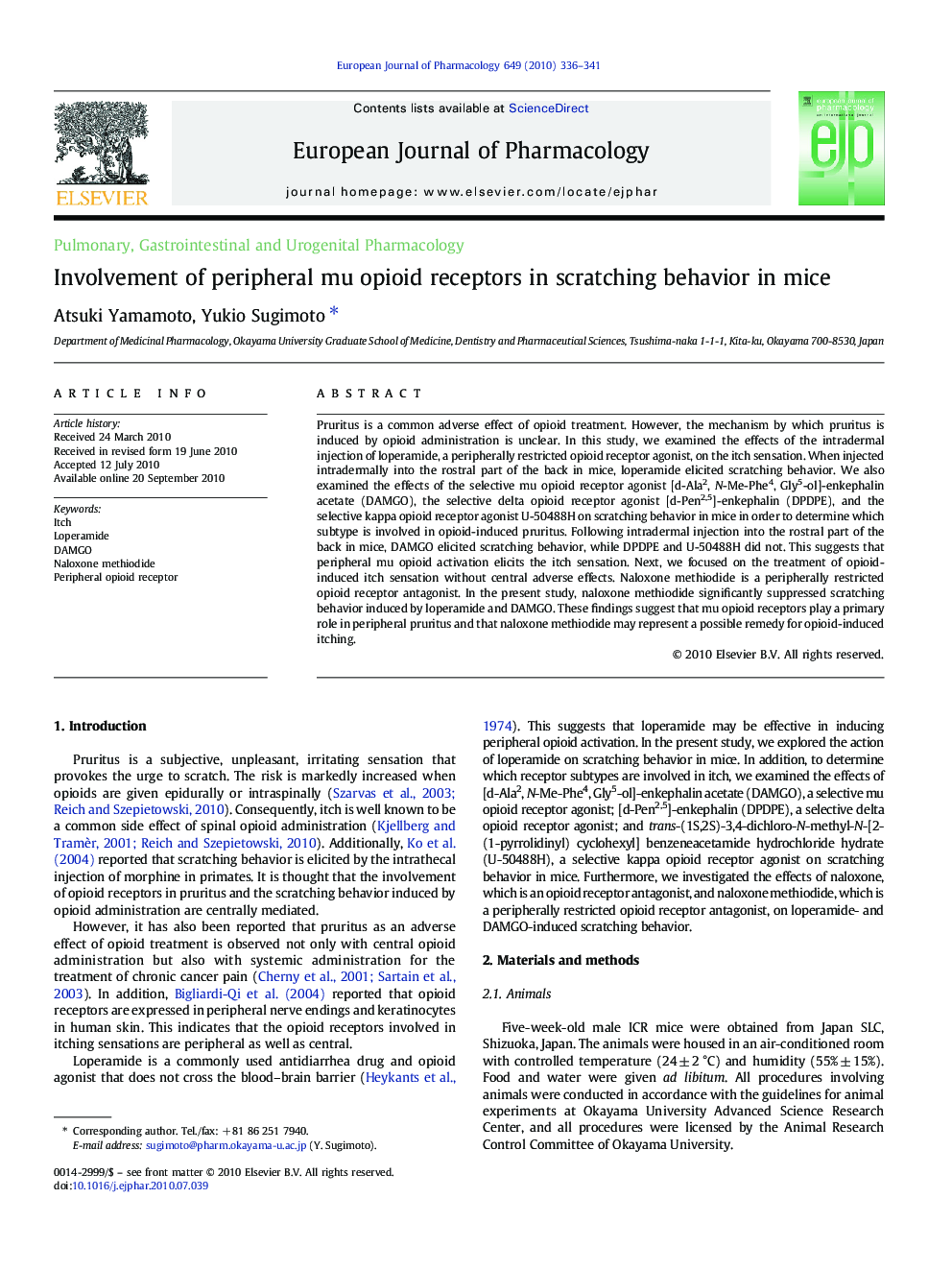| Article ID | Journal | Published Year | Pages | File Type |
|---|---|---|---|---|
| 2533168 | European Journal of Pharmacology | 2010 | 6 Pages |
Pruritus is a common adverse effect of opioid treatment. However, the mechanism by which pruritus is induced by opioid administration is unclear. In this study, we examined the effects of the intradermal injection of loperamide, a peripherally restricted opioid receptor agonist, on the itch sensation. When injected intradermally into the rostral part of the back in mice, loperamide elicited scratching behavior. We also examined the effects of the selective mu opioid receptor agonist [d-Ala2, N-Me-Phe4, Gly5-ol]-enkephalin acetate (DAMGO), the selective delta opioid receptor agonist [d-Pen2,5]-enkephalin (DPDPE), and the selective kappa opioid receptor agonist U-50488H on scratching behavior in mice in order to determine which subtype is involved in opioid-induced pruritus. Following intradermal injection into the rostral part of the back in mice, DAMGO elicited scratching behavior, while DPDPE and U-50488H did not. This suggests that peripheral mu opioid activation elicits the itch sensation. Next, we focused on the treatment of opioid-induced itch sensation without central adverse effects. Naloxone methiodide is a peripherally restricted opioid receptor antagonist. In the present study, naloxone methiodide significantly suppressed scratching behavior induced by loperamide and DAMGO. These findings suggest that mu opioid receptors play a primary role in peripheral pruritus and that naloxone methiodide may represent a possible remedy for opioid-induced itching.
